As the recovery from the impact of the global COVID pandemic continues, the past few years have been a fascinating time in the world of gold jewellery.
Whether economic conditions are positive or negative, gold jewellery is consistently in high consumer demand.
A cursory reflection on history shows that gold adornments have been cherished for thousands of years.
In many ancient cultures, gold was popular in jewellery and art because of its value, aesthetic qualities, ductility, and malleability.
This passion for gold is evident in the metal's role in cultural folklore and legends.
Today, gold jewellery is experiencing a resurgence in style and design as a new generation of consumers challenges traditional fashion conventions.
“In recent years, gold jewellery has reached staple status. What stylish woman doesn't top her tailoring and all-neutral looks with a pair of hoops in this warm metal?” asks Abigail Southan of Harper’s Bazaar.
“Before, gold was seen as too blingy and costume-like to be worn every day, but now, it's celebrated for its simplicity. Jewellery designers have moved away from baroque settings, opting instead for pieces with smooth curves, clean lines and subtly abstract shapes.”
Southan continues: “Still, that doesn't mean you can't get playful with your styling. A slender chain can go from understated to bohemian when layered, and even the most traditional of rings will add drama when stacked together.
“Brands are designing with mixing and matching in mind, creating versatile, buildable looks so that customers can get the most out of their purchases.”
According to the latest analysis from The World Gold Council, Australia experienced a 30 per cent increase in demand for gold jewellery in 2022.
This was attributed to the comparatively weak demand in 2021 due to the pandemic restrictions.
Despite these factors, the report suggests that annual demand was healthy at 11 tonnes, supported by a 22 per cent year-on-year increase in the fourth quarter.
Globally, jewellery consumption was virtually flat at 478 tonnes in the opening quarter of this year.
Jewellery manufacturing exceeded consumption as stock building added just over 30 tonnes to inventories worldwide.
In Australia, the news was positive, with consumers spending $AU210 million on gold jewellery, a seven per cent increase on a year-on-year comparison.
So, what does this mean for your store?
Despite the prevailing adverse conditions of the economy, the demand is still there; however, if you’d like to improve your gold jewellery sales, you may need to focus on your execution.
Fine-tune your presentation
American actor Will Rogers said it best: “You never get a second chance to make a first impression.”
First impressions are ever-lasting, and in the retail business, the visual presentation of your store – and g jewellery – can be the difference between welcoming a loyal customer and bidding farewell to a stranger.
Much of your success at retail and the sales you generate is contingent upon your visual merchandising skills. The fundamentals are easy to understand.
Customers are not drawn to sparse or poorly executed displays. Stores that stay the same, no matter what time of the year, are forgotten in favour of those with a better in-store experience.
Every fixture, product, and detail should encourage a customer to not only stay in your store but also to shop with you again in the future.
Lakefront property (LFP) is a US retail term for the most valuable ‘real estate’ on your sales floor.
Since 90 per cent of customers enter a store and look or turn to the right, your LFP can significantly impact sales. If your store has a centre door, your LFP is at the front right side of the sales floor.
Regardless of where your LFP is situated, it is a critical space that must be included in your themed displays and regularly updated. If you’re struggling to sell gold jewellery, this is where it needs to be located!
Georganne Bender is a retail strategist and an expert in visual merchandising. Bender says a critical tool in the jeweller’s arsenal is often overlooked.
“Speed bump displays work: they slow shoppers down. These are also the first displays customers see upon entering the store and a good indicator of what to expect on the floor,” Bender says.
“While most jewellery stores are small and don’t require speed bumps, a well-located table can do the trick. Change or update your speed bump displays once a week, more often if your store has a lot of repeat customer traffic.”
If you’d like to direct your customer’s attention towards your gold jewellery, a speed bump display may be a step in the right direction.
Store-front windows are the ‘eyes of the store’ and the first thing a customer sees. Unless your store is in a high-traffic area, you should change your window displays weekly.
The lighting within your store can influence a customer’s decision-making and purchasing behaviour.
According to one study, brightly lit spaces provoke impulse purchasing, while soft lighting slows down customers' pace and increases their time in your store.
Gold jewellery is unique because of the warmth and richness of colour it displays – and the lighting in your store should capitalise on these characteristics. Don’t hide your gold jewellery in some dark corner!
You should carefully consider the lighting in your store and ensure that these principles are considered.
Bundling?
 |
| Tiffany & Co |
Bundling is a method to direct attention to specific products within your store. If your gold jewellery sales need to improve, consider bundling as a strategy to boost performance.
A gold necklace, a pair of earrings, and a bracelet can be displayed together as a set.
This encourages customers to visualise themselves wearing each product together as part of a ‘complete’ look.
This is a powerful tool for upselling for jewellery retailers – encouraging customers to purchase multiple items rather than a ‘one off’ piece.
Given recent changes in consumer patterns, this is an important concept to consider. Romil Patel owns Fiji Jewels and oversees the operations of four jewellery stores.
“We’ve seen a shift in consumer patterns in our stores. I think there’s a new approach to fashion, particularly among younger women,” he tells Jeweller.
“I think the younger generation is conscious of the ‘complete package’. When it comes to outfits, they want every accessory to complement the others. There’s also a strong desire to avoid repeating outfits.
“When you’re frequently purchasing an entirely new ‘look’, the costs can quickly add up, and that’s why I think there’s a move away from precious gemstones and precious metals towards fashion jewellery.”
Patel suggests that jewellers should be mindful of this new consumer mindset and its impact on personal budgets when considering what products they stock.
“A beautiful set of diamond studs can match any outfit, but I think people are still looking for more flash and style,” he says.
“With metal prices the way they are, younger customers would instead get multiple colourful items than purchase one exceptional piece of fine jewellery.
“As a jeweller, that doesn’t mean you need to reduce yourself to selling very cheap products; it’s about finding a healthy balance in the middle.”
|
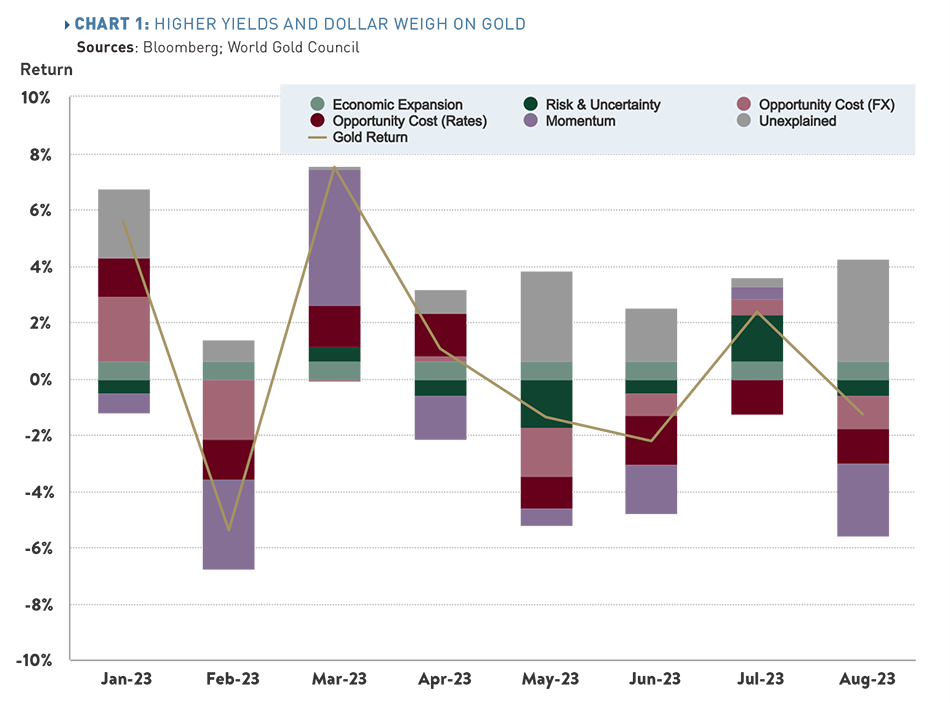 |
The World Gold Council's Gold Return Attribution Model (GRAM) is a multiple regression model of monthly gold price returns, which is grouped into four key thematic driver categories of gold’s performance: economic expansion, risk & uncertainty, opportunity cost, and momentum. These themes capture motives behind gold demand. ‘Unexplained’ represents the percentage change in the gold price that is not explained by factors currently included in the model. Results shown here are based on analysis covering an estimation period from February 2007 to 31 August 2023. |
|
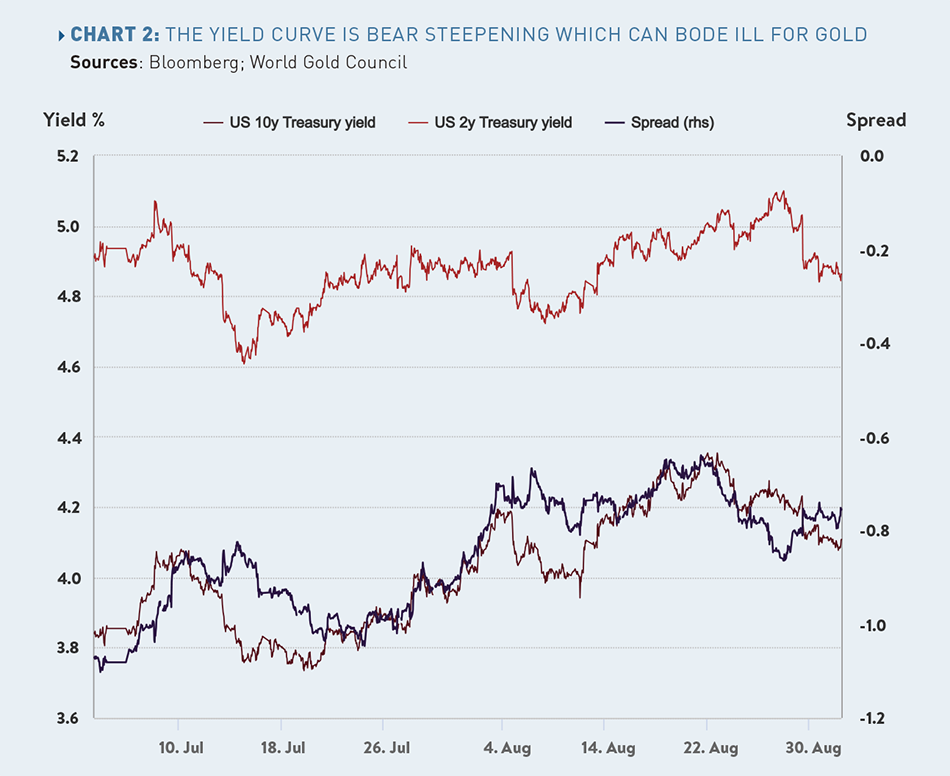 |
Current data as at 6 September 2023 – chart made up of data from 3 July 2023 to 31 August 2023. US 10-year and 2-year Treasury yields and the 10-year less 2-year spread. |
|
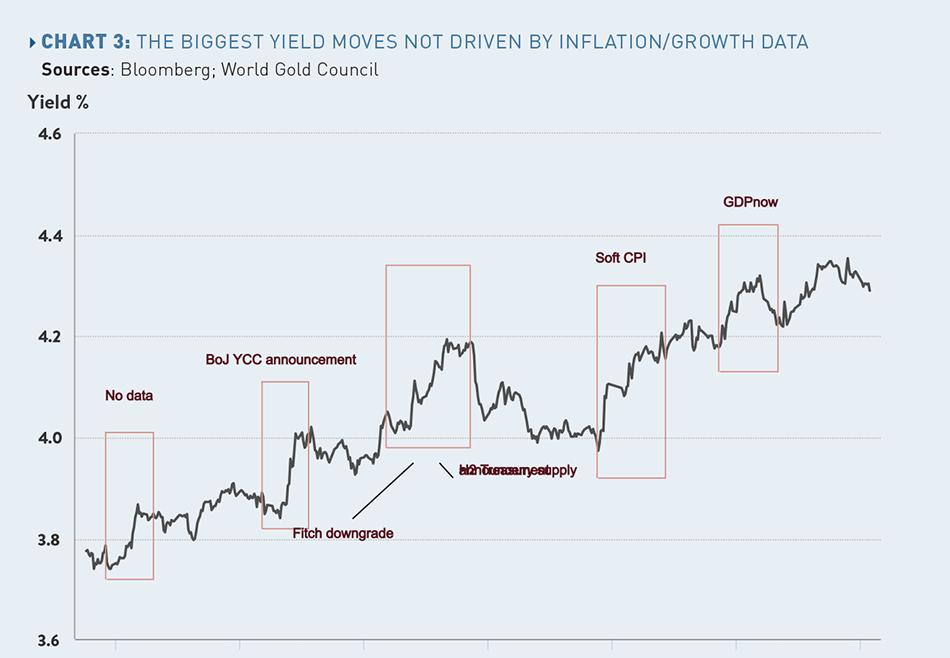 |
US 10-year Treasury yield from 19 July to 23 August at 60 min intervals. Highlighted boxes: 20, 27 July, 1, 2, 3, 10 and 16 August. |
|
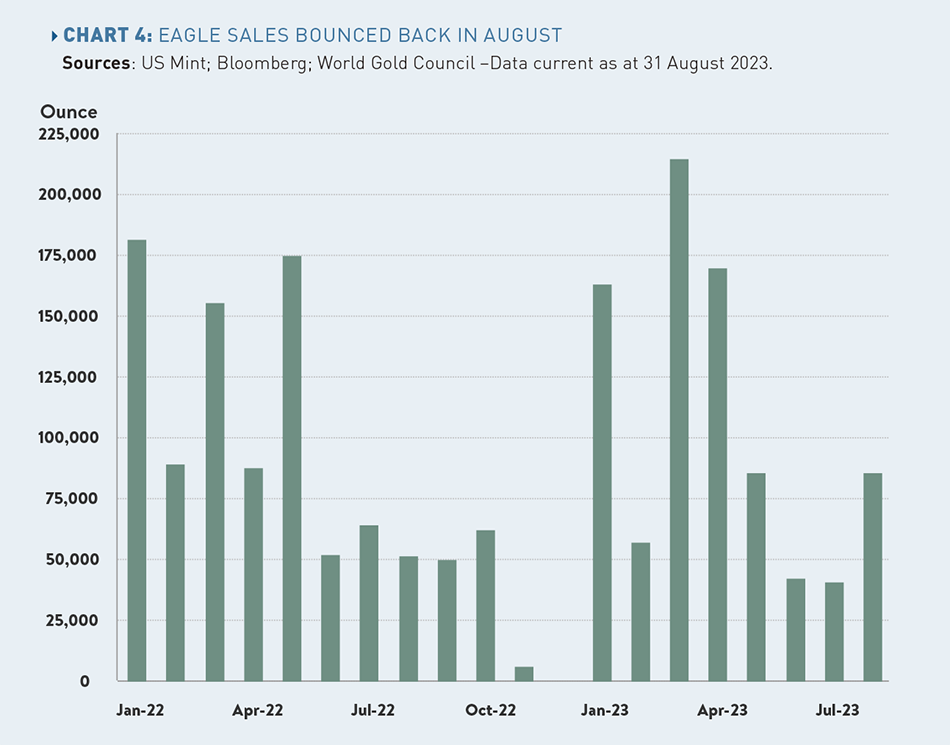 |
|
Relationship building with education
Now more than ever, consumers are looking for an educational experience when dealing with businesses and offering essential insights is vital to exchanges with customers.
This phenomenon is not just limited to gold jewellery sales; even for casual observers, jewellery and gemmology can be a fascinating field.
It’s important to remember that just because you may be knowledgeable about the topic doesn’t mean your customers are.
While educating customers on topics like the state of the industry or the history of jewellery can be a time-intensive investment, it’s a valuable avenue for increasing rapport and improving the likelihood of repeat business.
Recent research has suggested that consumers are more likely to purchase from a business or brand if they engage with ‘early-stage’ educational content.
Said another way, customers enjoy dealing with a business where they feel they learned something important from the experience.
This insight is intriguing; however, it leaves us with an important question – how can this information be used to improve gold jewellery sales?
Australian consumers have a pride and passion for purchasing local products. In an increasingly globalised world, losing sight of the characteristics that make ‘homegrown’ jewellery unique can be easy.
Educating your customers on the uniquely Australian nature of gold jewellery products is a strategy that establishes rapport and appeals to the desire to ‘buy local’.
Take BECKS as an example - a proudly Australian-owned precious metals company that supplies an extensive range of products and services to the jewellery industry.
Managing director Greville Ingham says that emphasising the origins of the jewellery is a point of pride.
“We have an Australian product line where we’ve refined and manufactured the gold ourselves, and it features Australian gemstones like sapphires and diamonds and opals,” Ingham said.
“Everything associated with the piece is Australian so that we can stamp the piece with the Kangaroo hallmark, and everyone that sees the jewellery from end-to-end sees it and knows that everything has been uniquely Australian every step.”
It’s a similar story for Palloys, which manufactures the iconic gold Melbourne Cup each year.
Palloys offers a guarantee that its gold is sourced from Australia.
“That guarantee means that when you partner with Palloys, your customers wear the most ethically sourced and sustainably refined 100 per cent Australian precious metals,” general manager Richard Ashman told Jeweller.
|
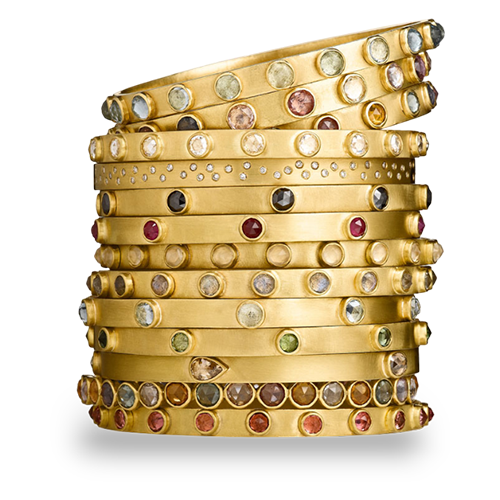 | 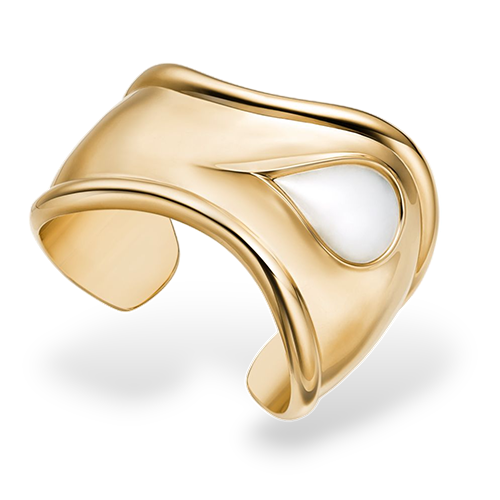 |
| Stephanie Albertson | Tiffany & Co |
|
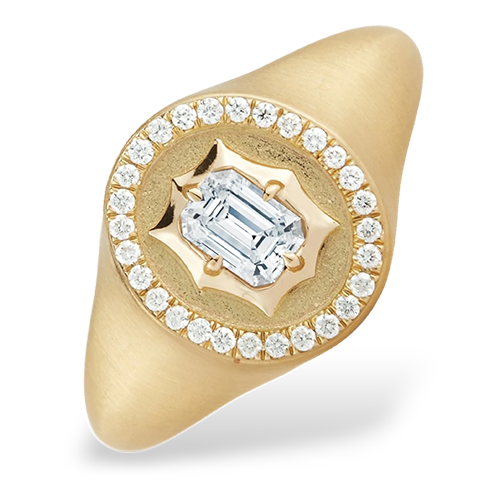 | 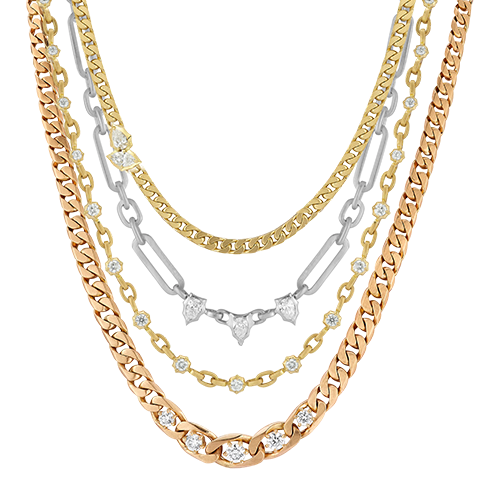 |
| L to R: Jade Trau |
|
Gold medals belong to winners
While some customers are concerned with provenance, not all are. If you find sales strong in other areas outside of gold, perhaps it’s time to refine your pitch.
Young Australian consumers are looking for “the complete look”. Meet these needs by bundling multiple gold jewellery pieces together.
When shopping for jewellery, customers need to consider colour preference, skin tone, skin sensitivities, the durability and weight of the material, maintenance factors, and price.
Gold is incredibly durable and is the most non-reactive of all metals: it won't react with oxygen and most chemicals, meaning it won't tarnish, rust, or perish.
This makes it ideal for jewellery use when intended to retain its value and finish indefinitely.
Gold is a very workable metal, another reason why jewellers and goldsmiths love to use it in their designs.
Gold displays a broad spectrum of colours depending on how it is alloyed with other metals. Gold is usually defined by its luminous, rich, warm colour, unmatched by different metals.
"From classic yellow gold jewellery to romantic rose gold jewellery and the more subtle white gold jewellery, there are so many variations of gold out there that are not just limited to colour," writes Emily Schinella of Shiels.
"There’s the precious solid gold, the slightly more affordable silver-filled gold, dainty gold vermeil and the more carefree gold-plated silver jewellery."
She added: "Each type of gold jewellery brings something new to the table and allows practically every budget out there to have a little touch of gold in their life, whether it's a funky pair of gold hoop earrings or a few stylish gold chains."
People's skin tone traditionally determined the choice of which colour metal to wear: warmer colours pair well with gold and cooler colours with silver. For those looking for ‘hefty’ jewellery, gold is the right choice.
Gold doesn’t tarnish; however, oils, makeup, creams, and cleaning products can dull the metal. Fortunately, soapy water and a soft cloth are often all anyone needs to clean gold – so maintenance requirements are light.
It was once believed that gold and silver should never be worn together, which might be a sticking point for any of your customers who have purchased white metals in the past.
That's no longer the case; many people are enthusiastically mixing metals.
"Throw out the old-fashioned notion that you should always match your jewellery and never mix them. The archaic rule is almost as pervasive as calling socks with crocs a fashion faux pas," writes Ruby Primrose Stephens for Harper's Bazaar.
"In the realm of fashion, the age-old saying 'less is more' may ring true for some, but when it comes to mixing metals, it’s all about the “more is more” approach.
Combining the warm tone of gold with the cool demeanor of silver may seem daunting, and some people may feel that mixing metals is too bold or risky."
If you’re dealing with a customer who finds mixing metals overwhelming, encourage them to begin with a statement piece, such as a necklace or bracelet, and build their look around it.
The statement piece offers the customer a foundation or focal point to build upon.
Indeed, mixing metals can look visually attractive if you vary the textures. Customers should consider combining smooth and matte finishes or shiny and brushed metals.
Have no fear
If you’re finding that sales of gold jewellery at your store are struggling – there’s no reason to panic just yet.
Demand is still strong; however, you may need to refine your approach to sales.
By engaging early with informative information, you demonstrate your expertise and reassure your customers that they’ve come to the right place – in other words, they’re in safe hands.
Gold has played an important role in the history of Australia, and that unique ‘homegrown’ appeal is a strong drawcard for many customers hoping to ‘buy local’.
Finally, for those customers who are simply choosing other metals over gold – it’s always helpful to remind them of the many unique and unrivalled qualities of gold jewellery.
READ EMAG